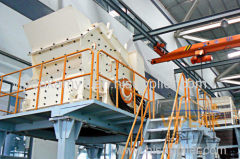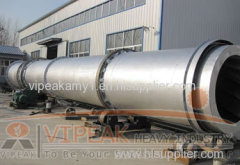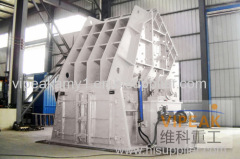|
henanvipeak
|
mill machines three roll mills fine mills
| Place of Origin: | Henan, China (Mainland) |
|
|
|
| Add to Basket | Add to My Favorites |
| HiSupplier Escrow |
Product Detail
Raymond Mill(Raymond Roller Mill) is applicable to the grinding and processing of more than 280 kinds of non-flammable and non-explosive materials wit
Raymond Mill(Raymond Roller Mill) is applicable to the grinding and processing of more than 280 kinds of non-flammable and non-explosive materials with hardness less than 7 and humidity less than 6% in mining, construction ,chemical industry and metallurgy, such as barite, calcite, feldspar,talcum, marble, limestone, clay, glass. The fineness of the finished product can be adjusted from 100 mesh to 325 mesh according to requirements.
Raymond Mill Structural Characteristics :
The whole raymond grinder is of a standing structure. Raymond Roller mill features small occupying space and strong integration capacity. Raymond Roller mill can form an independent production system from the lump materials , crushing to finished powder and packaging.
All the finished particles have a good uniformity of fineness, with passing screen rate as high as 98%. This is what other machine cannot reach.
The machine adopts electromagnetic vibrating feeder, which ensures even and regular feeding.Raymond mill is easy to adjust, small in dimension, light in weight, with lower oil and power consumption and easy to maintain.
The transmission device of the main unit is equipped with a close gearbox which ensures its smooth transmission and reliable operation.
Attendance of operater is not necessary in the mill operating room because the adoption of advanced central control console switch.
Raymond Mill Working Principle:
Load the stuff for grinding evenly and continuously into the grinding chamber of the main frame. Due to the centrifugal force in rotation, the roller swings go outward and presses closely upon the ring. The shovel carries the stuff to the space between the roller and ring. When the roller rolls, the stuff is thus grinded.
After being grinded, the stuff is to be routed to the classifier along wind belt of the blower and the rough powder will be put back to the grinder for regrinding. The fine powder flows into the cyclone collector together with air flow and is expelled from the powder output pipe as product.
In the grinding chamber, since the stuff contains moisture to some extent, the heat generated during grinding makes the moisture evaporate; since the pipeline joints are not airtight, the external air is sucked in and the circulation air mass increases. In order to enable the grinder to work in negative pressure, the increased air flow is guided to the deduster and sequentially to the atmosphere after purification.








































